Skin development in the gray short-tailed opossum (Monodelphis domestica)-From skin respiration to thermoregulation
- PMID: 39980182
- PMCID: PMC12159325
- DOI: 10.1111/joa.14236
Skin development in the gray short-tailed opossum (Monodelphis domestica)-From skin respiration to thermoregulation
Abstract
Marsupials are born at an early stage of development, and compared to eutherians, skin development is slow, and a functional change during skin ontogenesis occurs. The skin development in 36 gray short-tailed opossums (Monodelphis domestica) has been examined using histological, morphometric, and μCT methods during postnatal development from neonate to adult. The aim of the study is to follow the structural and functional transition of the skin in this immature marsupial species. Additionally, the postnatal development of the external appearance and the cardiac and respiratory systems is looked at to assess skin development in relation to the general development. The skin of the newborn gray short-tailed opossum is thin and undifferentiated (no hair follicles, no sebaceous and sweat glands). Numerous subepidermal capillaries allow for gaseous exchange via the skin. A dense cutaneous capillary net with a high capillary volume density (0.25 ± 0.04) is present at term, indicating significant cutaneous gas exchange in the neonate. The capillary volume density decreases markedly during the first postnatal week (0.08 ± 0.01). In the same time period, the skin diffusion barrier increases from 27 ± 4 to 87 ± 1 μm. From this age on, the skin development is characterized by thickening of the different cutaneous layers and beginning formation of hair follicles. First, hair covering the skin, sweat glands, and subcutaneous fat are observed by day 28, indicating the onset of thermoregulation. The total skin thickness in the gray short-tailed opossum increases from 58 μm at birth to 726 μm by day 35, when the pelage is fully developed. The cardiac and respiratory systems are immature at birth. A fenestrated interatrial septum is present for the first 4 days, allowing skin respiration. Between day 4 and day 7, the lung enters the saccular stage of lung development and is mature enough to meet the respiratory needs of the growing organism. During a long period of postnatal development, the structural differentiation of the skin results in a functional shift from transcutaneous gas exchange to thermoregulation in later life.
Keywords: cutaneous respiration; dermal ontogenesis; marsupials; skin development; thermoregulation.
© 2025 The Author(s). Journal of Anatomy published by John Wiley & Sons Ltd on behalf of Anatomical Society.
Conflict of interest statement
None declared.
Figures
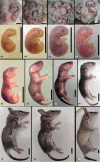



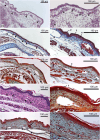
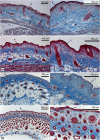
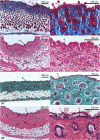
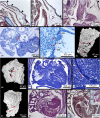


References
-
- Baudinette, R.V. , Runciman, S.I.C. , Frappell, P.F. & Gannon, B.J. (1988) Development of the marsupial cardiorespiratory system. In: Tyndale‐Biscoe, C.H. & Janssens, P.A. (Eds.) The developing marsupial. Models for biomedical research. Berlin, Heidelberg: Springer, pp. 132–147.
Publication types
MeSH terms
Grants and funding
LinkOut - more resources
Full Text Sources

